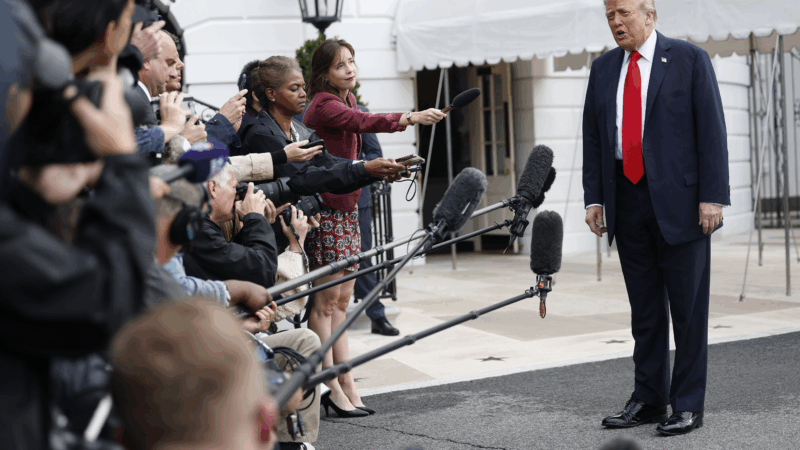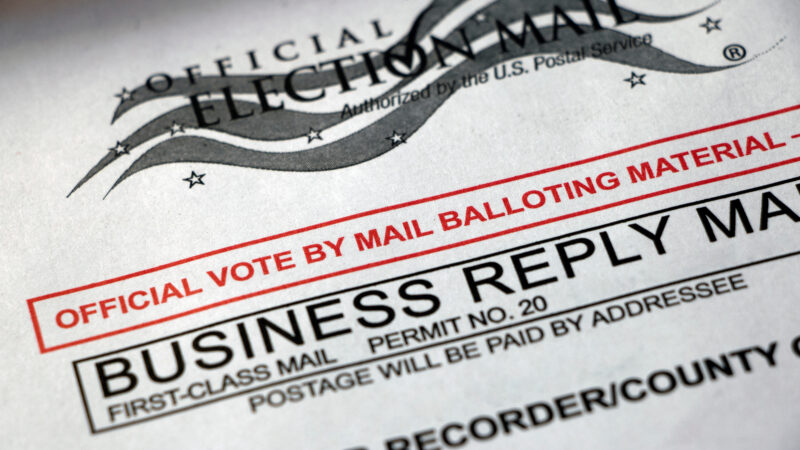Dozens of state laws take aim at food dyes amid a wave of support for MAHA
As policy counsel for the Center for Science in the Public Interest, it’s Jensen Jose‘s job to track food policy law. But this year it’s been very hard to keep up. Lawmakers of all political stripes offered up proposals targeting food additives across many states.
“There’s a lot of bills out there,” Jose says.
State policymakers are considering dozens of proposals this year aiming to limit the use of synthetic coloring and other chemical additives, like preservatives.
State bills vary, but Jose says most of the proposals focus on broadening the list of banned petroleum-based food colorings from Red No. 3, which the Food and Drug Administration already plans to phase out.
Many include Blue 1, Blue 2, Green 3, Red 40, Yellow 5, or Yellow 6. Some bills seek to regulate other chemicals, such as the preservative propylparaben, or potassium bromate, a chemical added to flour to strengthen dough.
Some bills have already become law. Arizona and Utah’s new laws will eliminate dyes and some additives from food served in schools. Texas will require, instead, warning labels for 44 listed food additives, specifying some ingredients are not recommended for human consumption by authorities in Australia, Canada, the European Union and the United Kingdom.
Many other proposals have died in the legislative process. But Jose says the sudden overall enthusiasm for food additive regulation reflects consumer frustration with federal inaction and an abrupt political embrace of the issue by conservative lawmakers historically resistant to regulation.
“The rise of MAHA — Make America Healthy Again — really was probably one of the more influential themes,” he says of this year’s state legislative season.
That movement — championed by President Trump and his Health and Human Services Secretary, Robert F. Kennedy Jr. — has shifted the political landscape on this issue.
When it comes to food additives, Jose supports eliminating those linked with health issues. But he also worries that some of MAHA’s other policy stances go too far in touting unscientific or pseudoscientific claims repeated by social media influencers.
“When you see MAHA translate that to things like vaccines and drugs and COVID, then it starts becoming a problem,” he says.
Take, for example, some proposals seeking to regulate seed oils such as soybean or safflower — despite a lack of evidence showing they pose a danger to public health.
Kennedy has pledged to prioritize “gold-standard” science.
Some of the legislation limiting food dyes may not be necessary, nor do all those ingredients pose a health risk, says John Hewitt, a lobbyist for the Consumer Brands Association, a food industry trade association.
He notes that food dyes have been approved for consumption, and many food makers — notably Nestle, Kraft Heinz, Kellogg (maker of Froot Loops), and the ice cream industry — already announced plans to remove artificial dyes from products in response to consumer demand.
Hewitt says having varying state rules on food dyes will not work; national brands can’t manage different recipes or packages for different states. “Supply chain and logistics get to be very challenging when we have state specific requirements,” he explains.
That’s why many experts believe the FDA will eventually have to step back in and create new regulations so there’s a uniform national standard, going beyond its ban on Red No. 3 and its request that industry voluntarily phase out other synthetic food dyes.
A stricter national standard is what some consumers want, and pushing the FDA to act may have been the original intent of those state bills, says Steve Mandernach, head of the Association of Food and Drug Officials, representing state and local membership.
But even if new national bans on food dyes come to pass, Mandernach doesn’t foresee synthetic dyes fading from food soon.
Manufacturing processes, he says — as well as consumer expectations for things like pastel-green mint chip cream — don’t change overnight.
“The thought that all dyes will be out of food quickly is probably just not a reality … it’s going to take a long time to make that happen,” he says.
Robert Redford knew how to make a thriller
Robert Redford could do drama. He championed small films. And he made thrillers that are perfect for curling up on the couch on a weekend afternoon.
Trump extends TikTok reprieve as deal nears
While legally questionable, the extension comes just as it appears China and the U.S. may finally have a deal on TikTok's fate.
‘People are scared’: Congress grapples with increasing political violence
House Republicans put forth a proposal to fund the government that includes $30 million for lawmaker security, as Congress grapples with increasing political violence.
The U.S. says it will burn $9.7 million of birth control. Its fate is still unclear
Questions about their fate swirled after the government's July deadline for destruction came and went. Then came a false report they'd been incinerated. Aid groups say it's not too late to save them.
Alabama asks court to lift block on limits to absentee ballot applications
The Alabama attorney general’s office asked the 11th U.S. Circuit Court of Appeals to lift a judge’s preliminary injunction last year that found the gift and payment ban is “not enforceable as to blind, disabled, or illiterate voters.”
RFK Jr. wants to end mental health screenings in schools. Experts say it’s a bad idea
Health Secretary Robert F. Kennedy and Education Secretary Linda McMahon are against schools giving kids standardized questionnaires about their mental well-being. But experts say they are wrong.










